Samsung Gear Sport Review
Samsung Gear Sport Review
A sporty smartwatch somewhat lacking in smarts
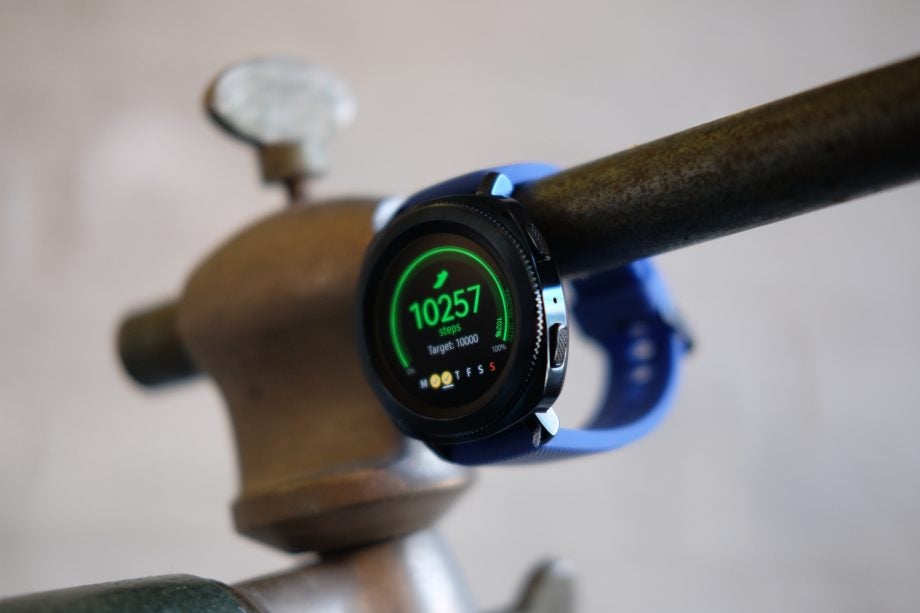
Verdict
Pros
- Accurate GPS/GLONASS
- Rotating bezel interface is still great
- Spotify offline playback
- Good activity tracking
Cons
- Shortage of Tizen apps
- No Bluetooth HRMs
- S Voice is forgettable
- Limited Samsung Pay support
Key Specifications
- Review Price: £299
- 1.2-inch circular Super AMOLED
- 360 x 360 resolution
- Tizen
- 50g
- 4GB internal storage
- 300 mAh battery
- Barometer
- HRM, GPS and GLONASS
- Water-resistant to 5ATM
- NFC
What is the Samsung Gear Sport?
Samsung’s latest smartwatch is all about sports, which will come as no surprise when you consider its name. Its design, too, exudes a fitness focus with a more sweat-friendly silicone strap and a smaller, lighter construction compared to the previous Samsung Gear S3. The smaller size is helped by the fact that there’s no built-in LTE connectivity.
Returning features include Samsung’s now trademark rotating bezel interface, always-on AMOLED display, decent battery life and somewhat divisive Tizen operating system. Where it has the edge over the Gear S3 is swim-friendly water-resistance to 50 metres, which is on a par with the more recent Apple Watch devices.
But while there’s much to like about the Samsung Gear Sport from a fitness perspective, it lacks some refinement to make it a more compelling smartwatch – and neither does it really move the Gear smartwatch series forward.
Related: Best fitness trackers
Samsung Gear Sport – Design and screen
When I reviewed the Samsung Gear S3, I found it rather cumbersome to wear. It was a gargantuan wearable and looked comically big on my wrists. Thankfully, the Gear Sport is of a more manageable size. Its thickness isn’t much more than an Apple Watch Series 3, which means it’s less prone to snagging on sleeves when you want to look at it.
Samsung has shaved about 13g of the weight as a result (compared to the Gear S3 Frontier), with the Gear Sport weighing a far wrist-friendlier 50g. As mentioned, much of this size and weight is shed through the lack of an LTE modem, which was a feature of the Gear S3. But when you consider that the implementation of LTE connectivity on the Gear S3 wasn’t as seamless as seen on the Apple Watch Series 3 – which has a single shared phone number between phone and wearable – it isn’t something I miss on the Gear Sport.
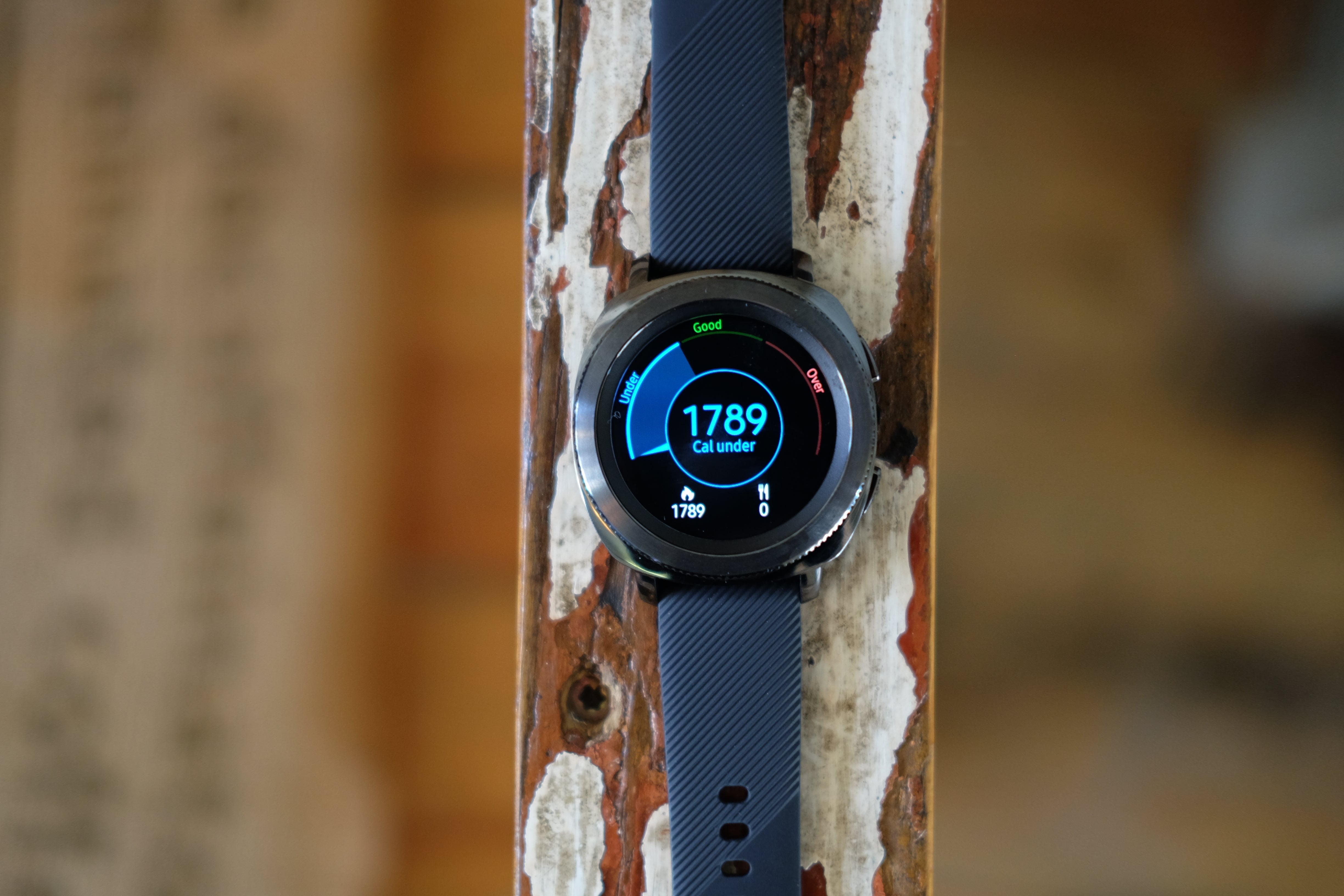
The Gear Sport comes in a choice of either blue or black finishes; the former is definitely the more eye-catching. It’s a two-tone finish, with a darker shade of blue on the watch casing, contrasting with a bright, vibrant blue for the silicone strap. I rather like it, having approached the Gear Sport very much as a sports watch. However, those looking for a more discreet wearable might find it difficult to pair in more formal scenarios where black will be the safer option.
You get both large and small straps included in the box, but you can easily swap these out completely for a standard 20mm watch strap.
The watch casing almost appears to be made up of two parts. The base is a subtle, almost rounded-off square, with the fully circular display sat on top, and the rotating bezel surrounding it. The bezel has ridged edges that make it easy to spin, which I find preferable to the smooth bezel of the Gear S2, which was sometimes tricky to rotate.
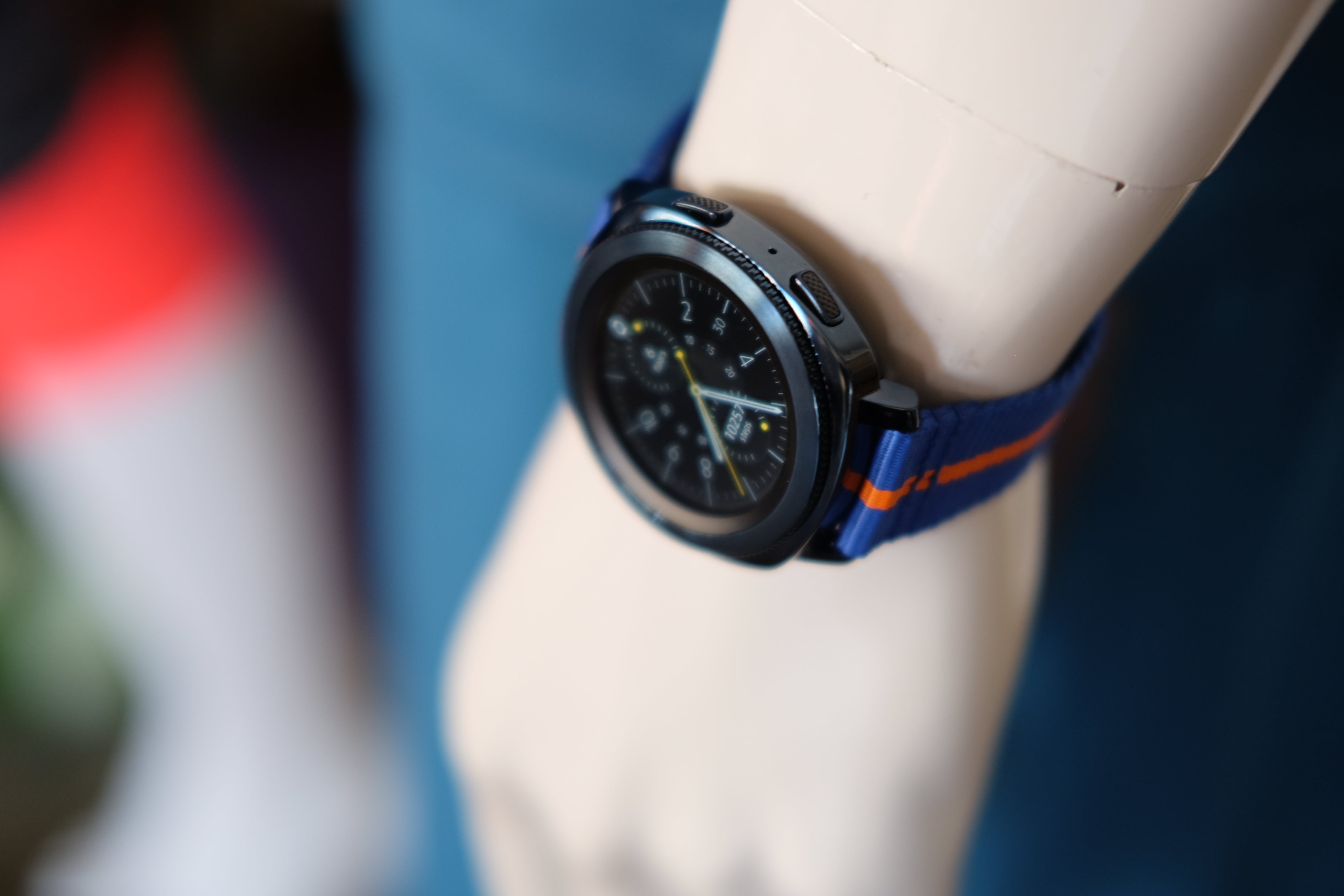
The bezel rotates with distinct clicks thanks to magnets inside that give it some welcome tactile feedback. The rotating bezel is still one of my favourite smartwatch interfaces, since it feels so logical and intuitive for round displays.
The display itself is a 1.2-inch AMOLED with a 360 x 360 resolution. It’s as beautifully crisp and vibrant as any of Samsung’s other wearable displays. I haven’t encountered any issues with visibility outdoors and text always looks sharp as a tack.
The wearable also has a colour always-on display mode, which keeps the display turned on in a less battery draining mode even when the watch isn’t in use. This makes it easy to check the time, and also means the Gear Sport resembles a traditional watch when not in use. I found the wrist-on gesture to wake up the watch a little hit and miss, making the always-on display a welcome inclusion. It does mean less battery life overall, however.
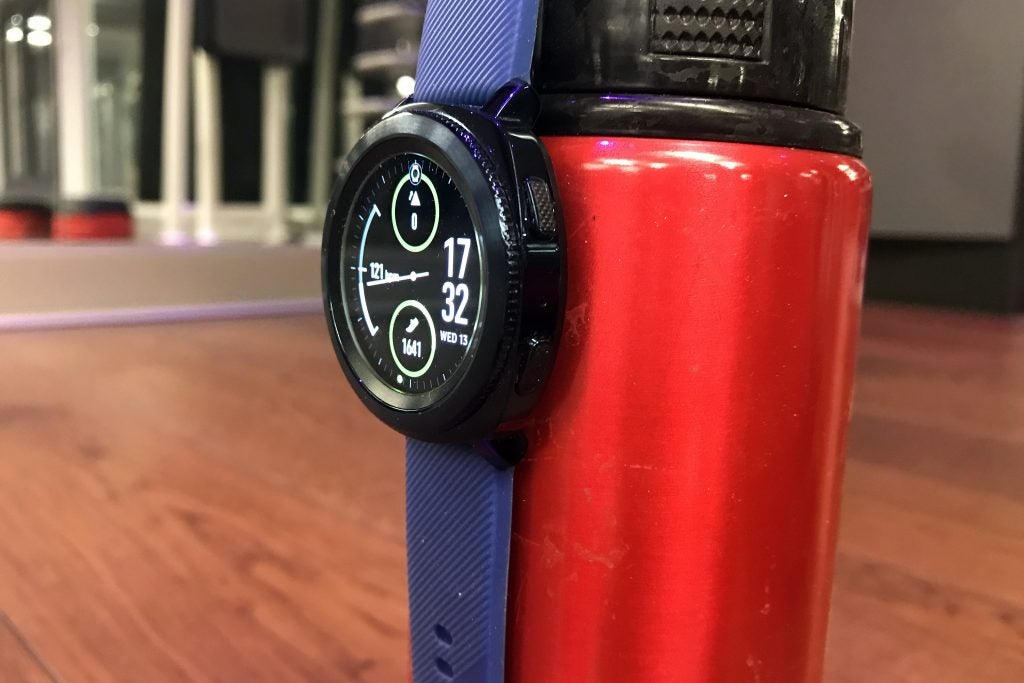
Alongside the rotating bezel and touchscreen display, there are two hardware buttons on the side, much like previous Gear smartwatches. Between these is a microphone that can be used with Samsung’s S Voice assistant. Yes, while Samsung’s other assistant, Bixby, might be a feature of Samsung’s latest smartphones, you’re still using the older S Voice here. It’s as basic as it ever was, and just as finicky too. In all honesty, I forget that it’s an option most of the time.
Flip the Gear Sport over and you’ll discover an optical heart rate monitor for all-day monitoring and workouts. The Gear Sport’s water-resistance has been seriously bolstered over the Gear S3 – it’s now rated to 5ATM (50 metres). That’s the same as the Apple Watch Series 2 and Series 3. The Gear S3 was just IP68, which meant depths of 1.5 metres for 30 minutes. It means the Gear Sport is now much more suited for activities such as diving.
Samsung Gear Sport – Performance and apps
Inside the Samsung Gear Sport is a dual-core 1GHz processor, 768MB of RAM and 4GB of storage. These all work together to make the Tizen operating system feel snappy and responsive. Rotating the bezel between screens is instantaneous and all the menus respond without a stutter. It feels no different to the Gear S3 in that regard.
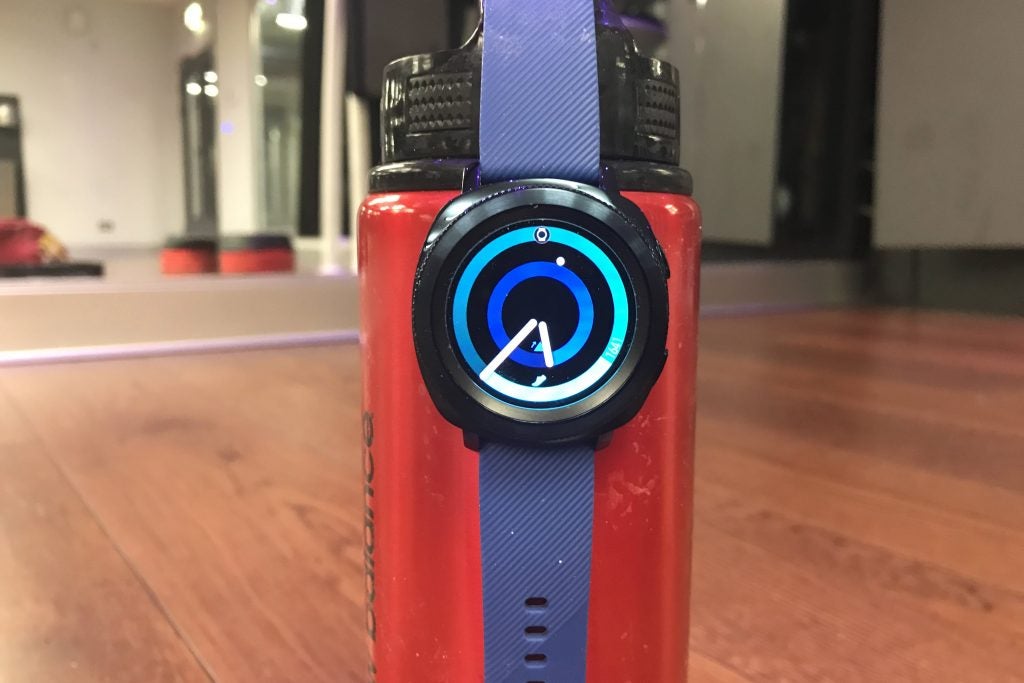
Everything is intelligently laid out, too. Rotate the bezel left (or swipe with the touchscreen, if you prefer) and all of your notifications are separated by individual cards to the left of the homescreen. Scroll right and you’ll see all of your customisable widgets. Want quick access to your steps or the number of stairs you’ve climbed? Just drag and drop these so you don’t have to scroll as much. Or you can have quick access to your music scrolls with just one swipe. It’s up to you how you order your widgets.
Unfortunately, on the apps front things are still lacking. Tizen is still a distance behind both watchOS and Android Wear. Trawl through the Galaxy Apps catalogue and you’re largely greeted by third-party versions of the apps you probably want. The big home automation apps or even navigation apps are still missing.
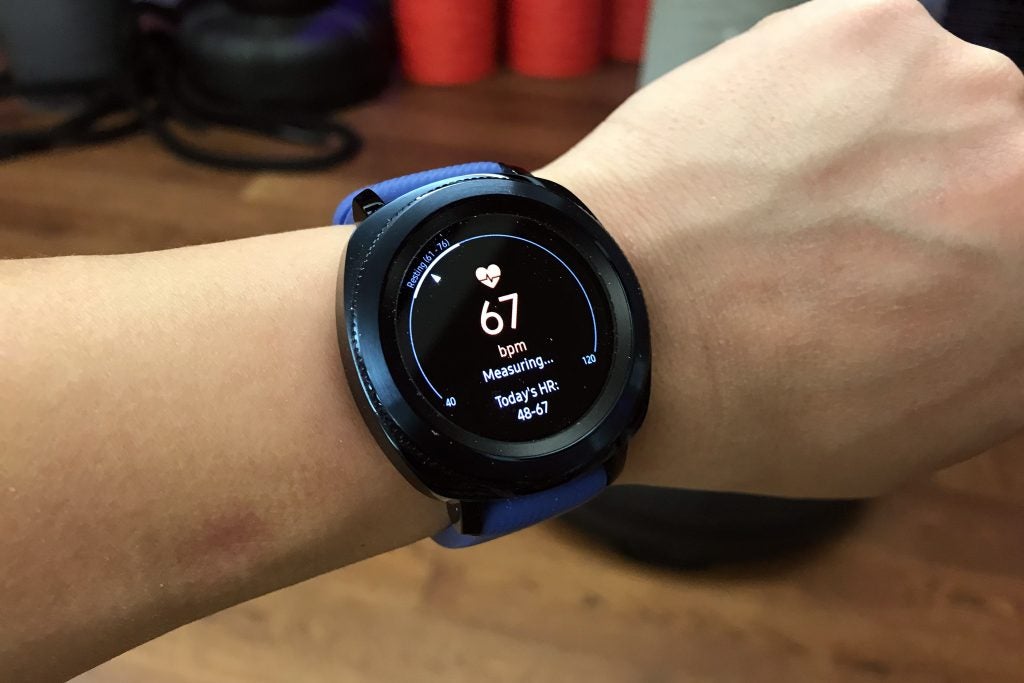
If there’s one saving grace, it’s Spotify on Tizen. Somewhat surprisingly, Tizen-based wearables are one of the only devices that offer support for Spotify offline playback. While Android Wear devices let you save Google Play Music offline, and Apple Watch devices let you save Apple Music, there’s obviously been a conscious move from both to tie you into their own music services. Samsung doesn’t have a horse in the streaming music race.
So with a Spotify account, you’re able to either stream music directly on the Gear Sport if you have a Wi-Fi connection, or save your favourite playlists for offline use. Just pair up the Gear Sport with Bluetooth headphones and you have Spotify while out on a run away from your phone. With Spotify having the higher install base, this is a boon for Samsung.
On the contactless payments front, Samsung Pay makes a return. Unfortunately, it isn’t as well supported as Apple Pay or Android Pay. For example, my bank, Barclays, isn’t on board, so I haven’t been able to try it out. If your bank does support it, it’s a handy option to make quick payments.
Samsung Gear Sport – Workouts and fitness tracking
Of course, this wearable focuses on sports. As such, there’s GPS and GLONASS built in for accurate location and distance tracking. Also included is a heart rate monitor, a barometer for elevation, and an accelerometer for step counting and sleep tracking. Alongside the 5ATM water-resistance, you have everything you’d need to track most workouts.
There’s no shortage of available workouts, either. Whether that’s the standard stable of running, cycling or swimming, or more obscure workouts – chances are, there’s an option for it on the Gear Sport.
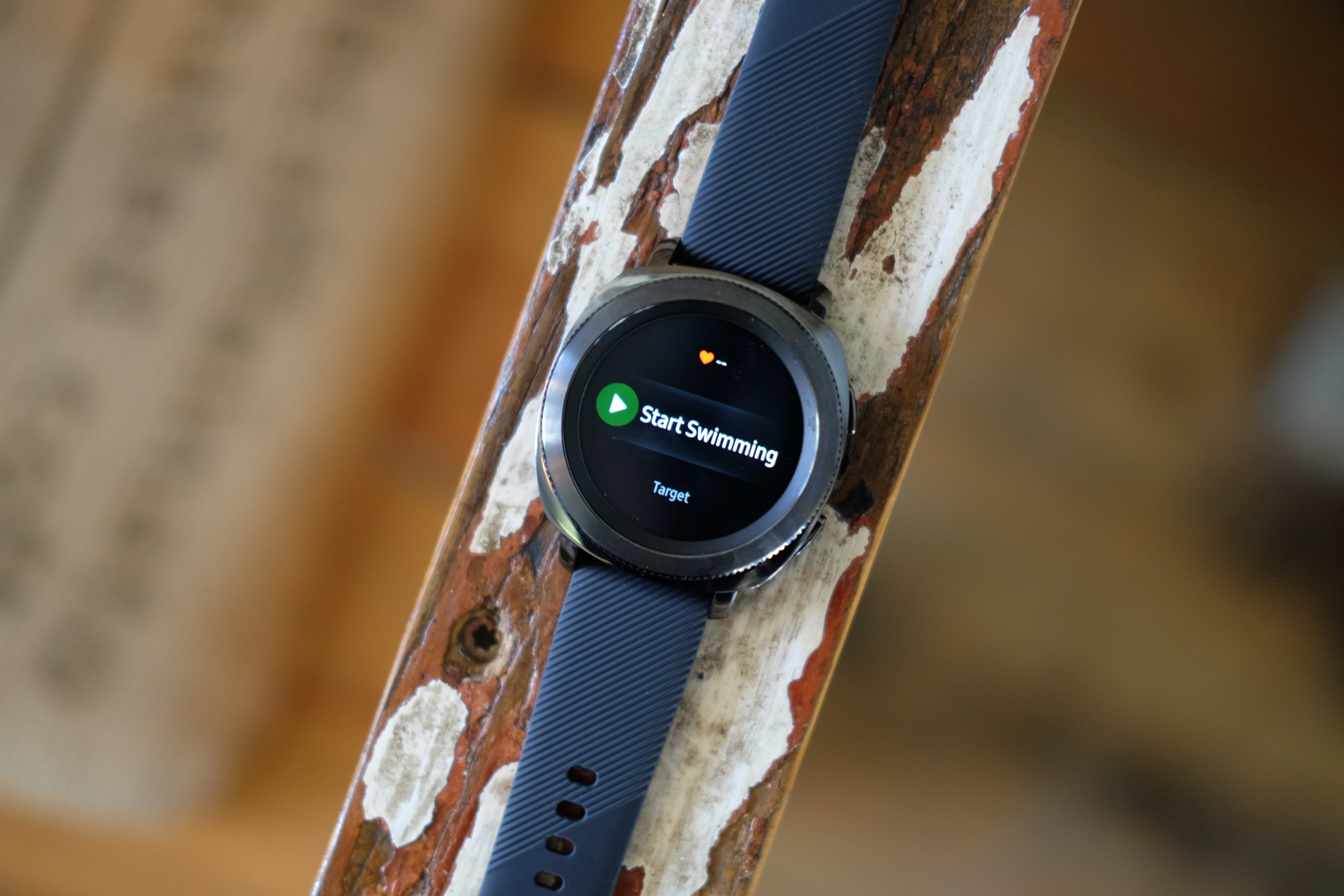
All of your activity, sleep and workout data plug into Samsung’s Health app, which might require you to sign up and download a bunch of companion apps unless you’re already using a Samsung phone. There’s a dedicated Speedo app for the swim-tracking, too.
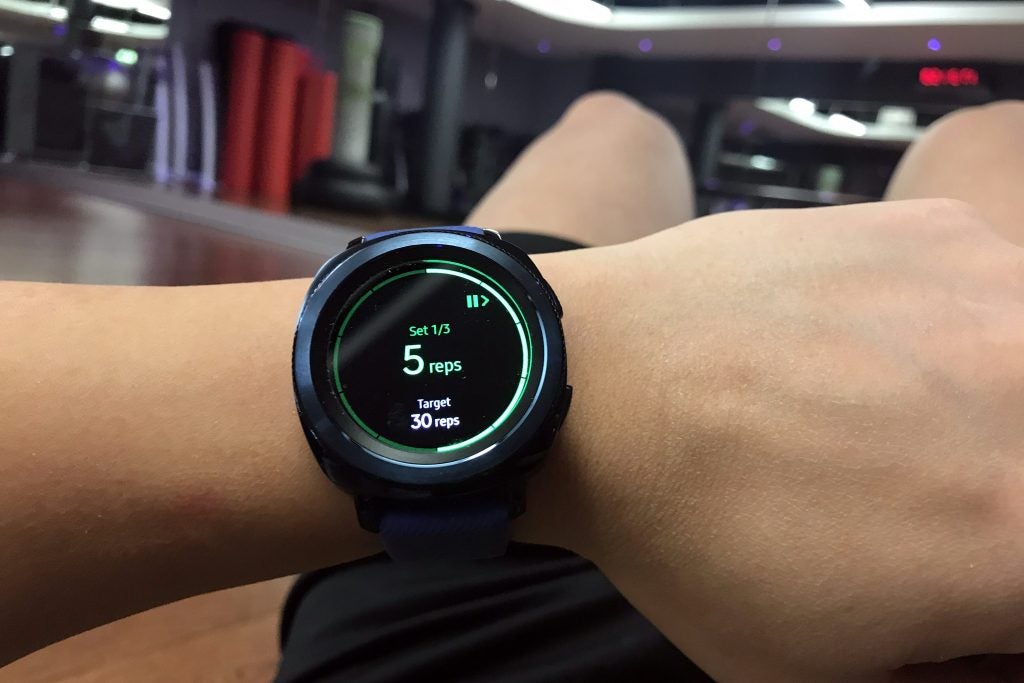
In fact, the Gear Sport is designed to work best with Samsung devices such as the Galaxy Note 8, which can display some of the workouts – crunches, for example – on its screen. This should be easier to follow than staring at the display while gasping for breath. The Gear Sport can even work with certain Samsung TVs to offer an even bigger display, also showing your heart rate data on-screen. I wasn’t able to test this myself as I don’t have a compatible TV, but we were shown this feature at an earlier hands-on event. A neat, if not niche, feature.
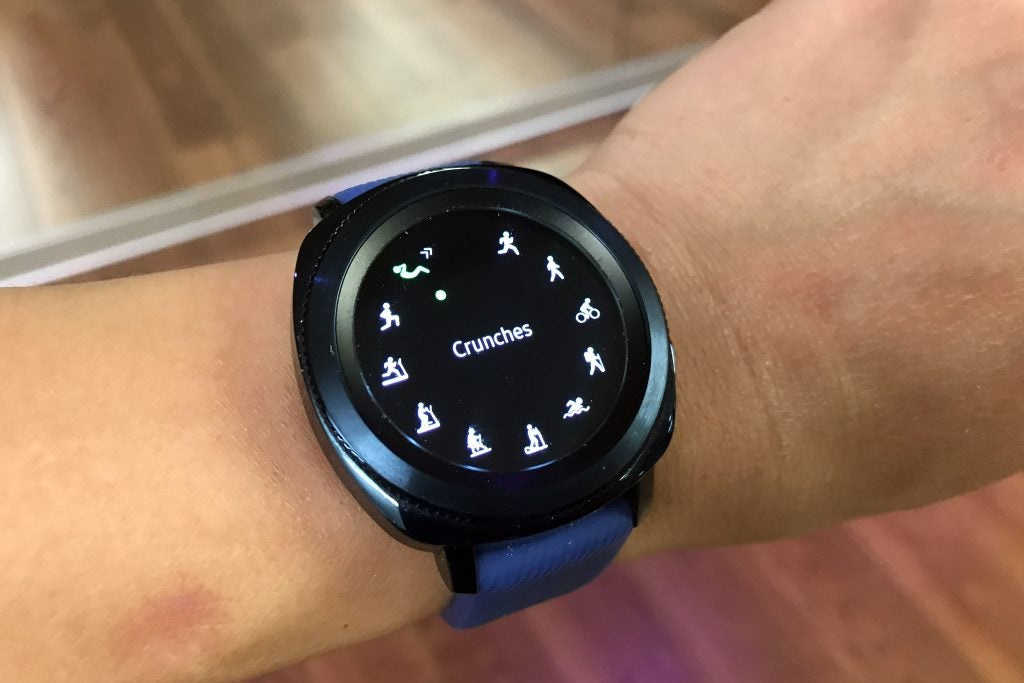
The aforementioned shortage of apps on Tizen extends to fitness. As such, if you’re after Strava or Runkeeper – or practically any other fitness app – then you’ll be left wanting. You’re left reliant on Samsung Health, which isn’t the worst – but choice is always welcome.
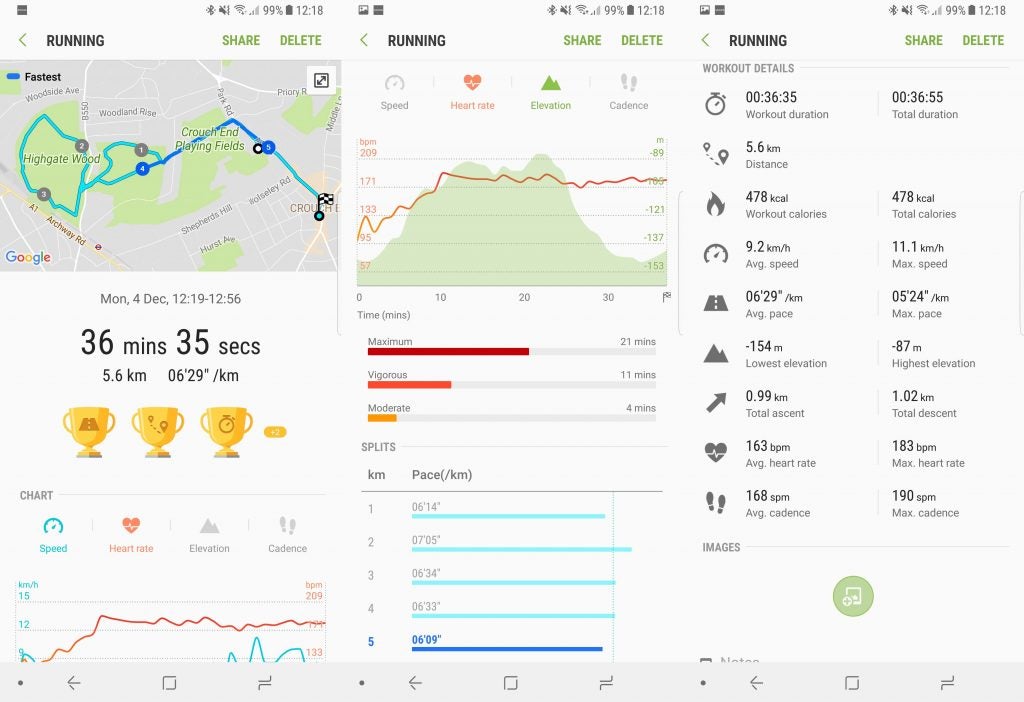
Between the GPS/GLONASS and offline Spotify music playback, the Gear Sport makes a compelling case for leaving your smartphone behind when going for a run. Pounding the pavements I found it comfortable to wear and its screen displayed all of the metrics I’d want. Having the rotating bezel as a way to swap between screens is also great for when prodding at a screen mid-stride is tricky, or if you’re wearing running gloves in these cold winter months.
All of the distance and heart rate data compared favourably with an Apple Watch Series 3, and the Samsung Health app makes viewing back the important data easy, with a nice map for your efforts.

There’s automatic workout tracking, too, so take a 10-minute walk and it will log it automatically; hop on a bike and your distance is measured without user interaction.
One shortcoming worth noting is that while the Bluetooth allows pairing with headphones, there’s no support for pairing a Bluetooth heart rate monitor – which seems a strange limitation considering this is a sports watch.
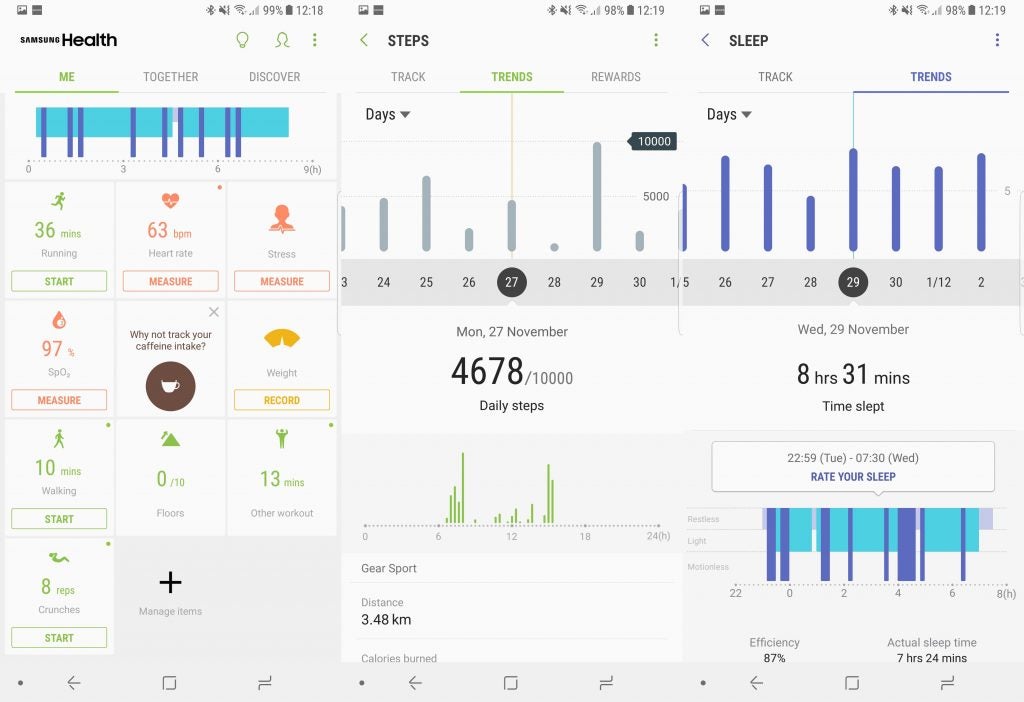
The all-day activity tracking is well handled with lots of positive feedback for your efforts. You receive notifications when you’ve hit your stairs climbed goal, which makes you want to use the stairs in place of the escalator. There are move reminders if you’re sat around too long, or you’ll also receive prompts to do stretches while sat down – useful if you really can’t get away from your desk but want to do something. The accelerometer counts your reps so you know when you’ve done enough.
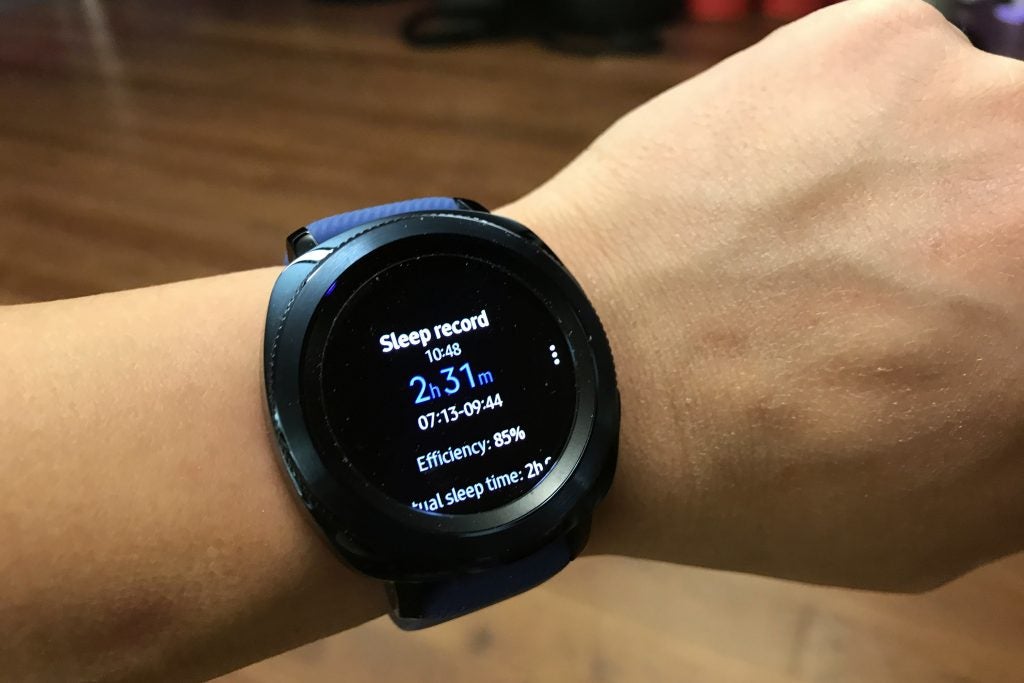
The sleep counting is accurate based on duration, but there isn’t quite the richness of data seen from Fitbit’s trackers. Slightly annoyingly, the notifications still just show the most recent sleep duration. So, if you get woken up in the night or early morning (hello cats) and then go back to sleep, the notification might only say you’ve slept for two odd hours, rather than bunching it all together. It’s only a minor annoyance and the rest of the data is available in the Health app just fine.
Related: Best smartwatches
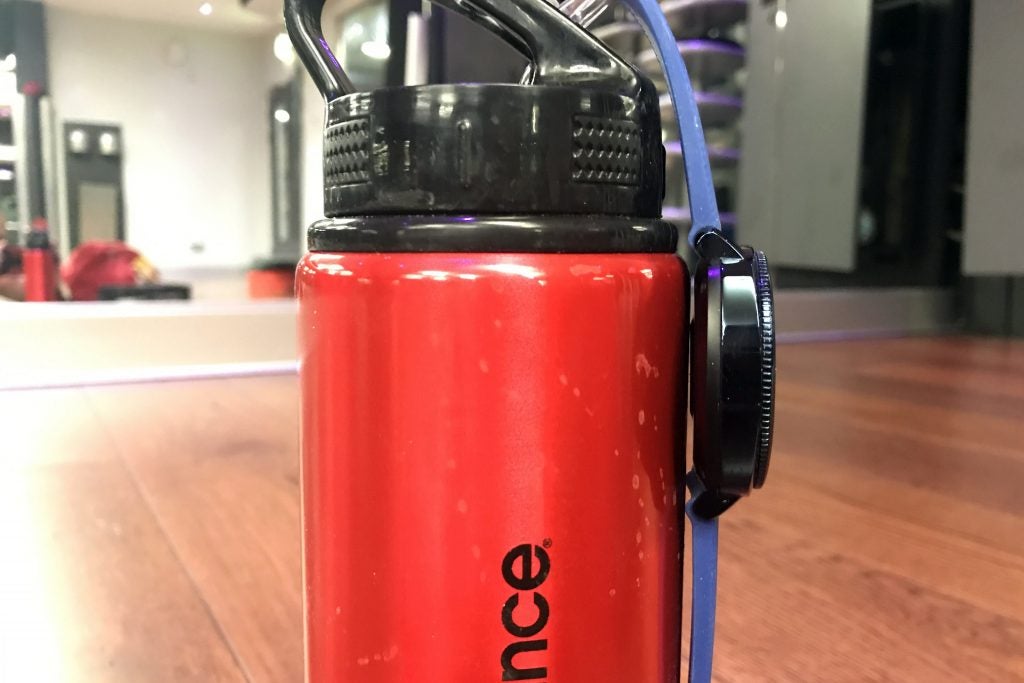
Samsung Gear Sport – Battery life and charging
You can expect just over three days battery life from the Gear Sport, for general activity tracking with the always-on display turned off. It’s closer to two days with the always-on display engaged. That’s not far off the Gear S3, which included a slightly larger battery. Battery life will take a big hit when you use the GPS, however. Playing Spotify music to Bluetooth headphones can also have a big hit on battery life. If you’re expecting to do a lot of both, expect to be charging every other day or even nightly to be on the safe side.
Samsung includes its usual charging dock that doubles as a nice table stand, which connects through a micro-USB cable.
Why buy the Samsung Gear Sport?
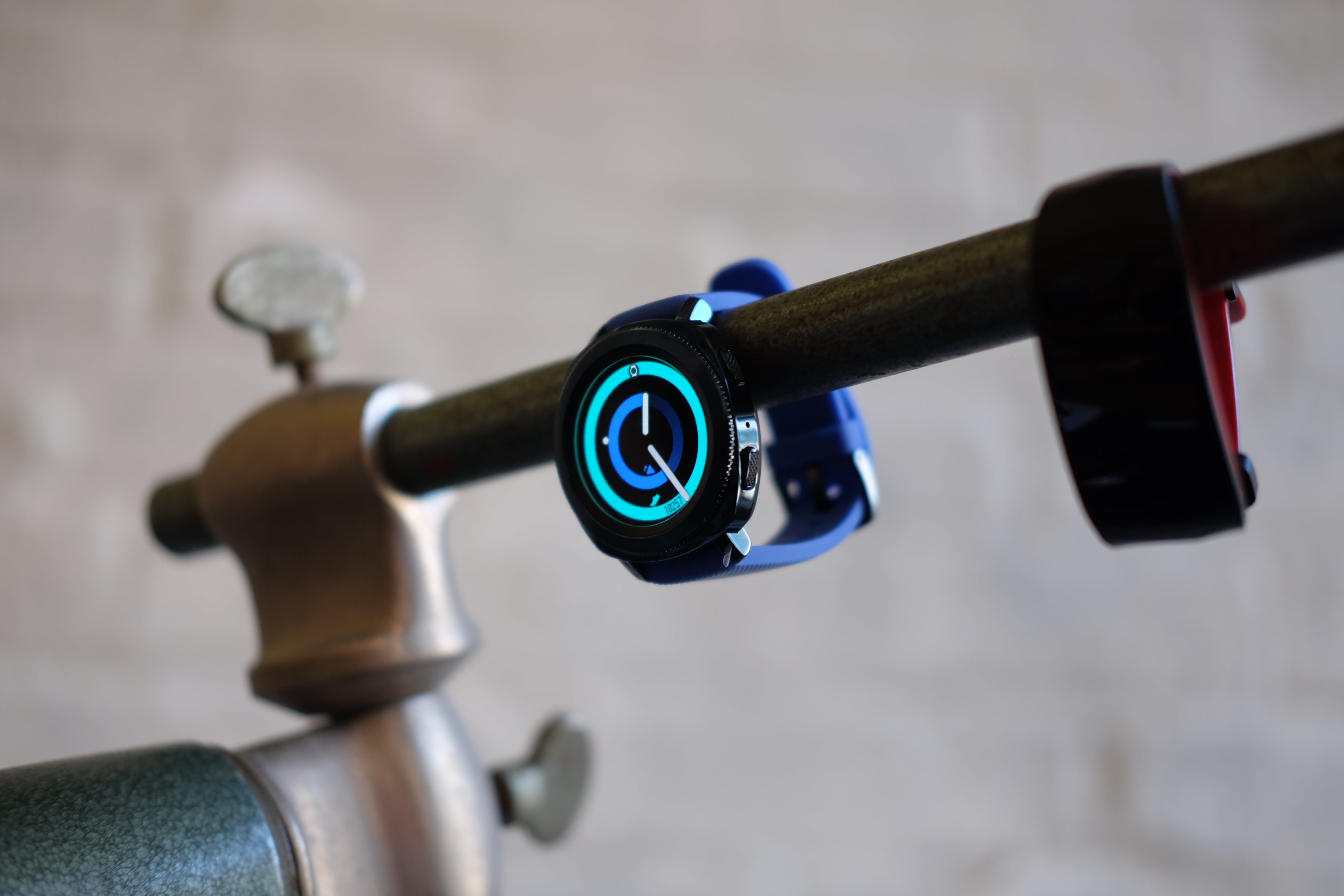
If you’re looking for a sports-centric wearable, the Samsung Gear Sport gets plenty right – provided you don’t mind using Samsung Health as your central hub. The Gear Sport has all of the features and specifications of a sports watch that you’d want. The activity tracking, too, is generally well implemented.
However, it falls flat as a smartwatch, mainly a result of the usual Tizen OS limitations – namely, there just aren’t enough apps. Basic smartwatch operations are present, such as well-managed notifications, but the rest hasn’t really evolved since the Samsung Gear S2. Much of this functionality is also available in the cheaper Samsung Gear Fit2 and Samsung Gear Fit2 Pro, albeit in a different form factor, making the Gear Sport less compelling overall, but still a step ahead of the similarly priced Fitbit Ionic.
Verdict
The Gear Sport gets the sports side right – but the smartwatch smarts are lacking.


